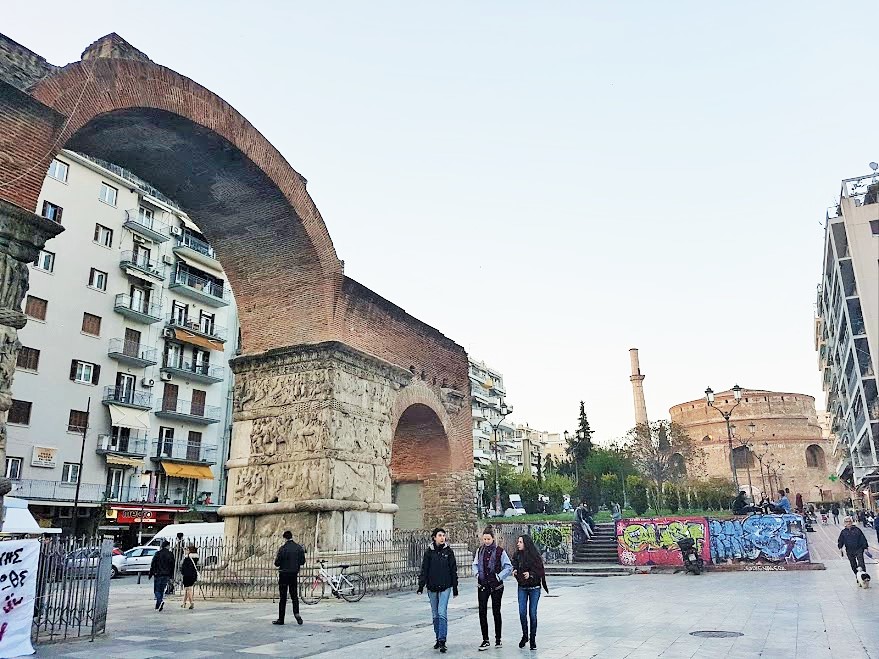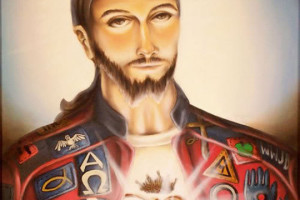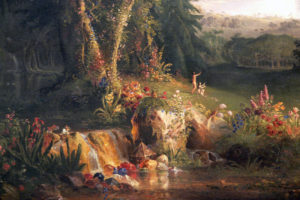Last Spring I attended an academic study trip to Northern Greece with some of my colleagues, faculty and postgraduate research students from two other universities (Liverpool Hope and KU Leuven), and some independent researchers. We visited Thessaloniki, Philippi, Kavala (Neapolis), Amphipolis, Thasos, Pella, Veria (Berea), Vergina, and Dion. We had the wonderful opportunity to visit archaeological sites, old ruins, ancient churches, and loads of museums. The trip afforded us personal exposure and teachings in situ. It was incredibly enriching for our understandings of ancient Greek, Roman, Jewish, and Christian contexts. We travelled far and walked a lot, so it was quite exhausting, but also very worth it!
One thing that really struck me was the contrast of ancient Greek and Roman religions and ancient Christianity which thrived in the same territories, whether hundreds of years apart or contemporaneously. Churches were built upon ruins of older churches, but oftentimes at or neighbouring Greek or Roman cultic sites or even simple images or epigraphs with religious content. Some temples were even converted into churches by Christians, only to be converted into mosques by the Ottomans, and then reconverted (or restored) back into churches later. An example would be the Rotunda near the Arch of Galerius in Thessaloniki (featured in the image above), which was originally a Roman temple of sorts, then was converted into a church, then a mosque, then re-consecrated as a church again. I saw remains of Graeco-Roman mosaics, altars, temples, and other artefacts that co-existed with some of the oldest Christian churches, or at least were still extant and visible to the earliest Christians.
Perhaps this conglomerate of religious presences seems quite apparent or obvious as this is what one would expect to see in Greece given known history and descriptions of these very things in biblical and Graeco-Roman literature. Nevertheless, having come from America, I was never personally exposed to such ancient artefacts or buildings, including churches and locations I had only read about in ancient literature or during my studies. In my day-to-day American life I had not been accustomed to walking by a temple of Zeus or 1,700 year hold church ruins on my way to buy lunch. Sure, I had seen some things at museums or in photographs or on video, but the reality of it all did not hit me until I saw so much of it in Greece, the very place of its origins.
The Greeks and Romans controlled most of Europe, and so people living there today (indeed, even here in the UK) often see ancient ruins, artefacts, and churches almost every day. In fact, before going to Greece I had already seen some of these around the UK and walked on ancient walls. We have a Roman-era epigraphical artefact at the Manchester Museum that was discovered here just during routine digging. Yet, I was not as impacted by all of this until I saw the extent of it throughout Northern Greece. It can be startling to see people today living next to ancient sites. Even in Conwy, Wales, one can see the backyards or gardens of houses being enclosed by old castle walls as the current occupants use the original steps as an ideal place to display their numerous flowerpots. Similarly, in Northern Greece there are archaeological sites and ruins literally just neighbouring modern residential buildings, and these are seen just about everywhere you turn. The workers in Thessaloniki are currently experiencing a bit of an issue attempting to build an underground transport system due to the constant discovery of more ruins. I just wasn’t used to waking up every morning next to temples of Greek or Roman gods or strolling through remains of an agora on a typical day… with innumerable stray dogs I might add!
Most of the Christians and churches in Northern Greece are Orthodox (obviously). I didn’t, however, realise the extent of how religious a lot of the common people were. I saw lots of wayside shrines (tiny columns/pillars/posts and small chapels or shrines) on rural roads, hilltops, and city streets adorned with icons, candles, and incenses. Shops selling icons and other Orthodox Christian provisions can be found on nearly every street and turn. Many of the people I saw or encountered seemed quite religious, evidenced by their words, demeanour, or business décor. Orthodox priests walking around just about anywhere in the cities became a common sight.
Mesopotamia hosted the origins of some very famous religions and their civilisations: Greek religion(s), which were labelled ‘pagan’ according to Christian or Judeo-Christian perspectives, and Christianity. It is fascinating that the famous Classics of Greek and Roman culture (i.e., Classical literature) with their representations of their gods originated and flourished in the same place that Christianity originated and flourished. Graeco-Roman culture and cultic practices undoubtedly contributed to the origins and shaping of earliest Christianities, even if out of response to how Christians should navigate such things. They both existed side-by-side. Even today, as I witnessed, their ancient extant remains exist side-by-side, but Christianity is still prospering. Many of the Greeks I met are proud of both of these histories. They pride themselves in ancient Greek culture, achievements, composers, authors, and religions (including the heroes and gods). At the same time, they are proud Orthodox Christians and take pride in their contribution to the origins of Christianity, the apostle Paul whom they hosted and venerate, and their ancient churches still in use. The famous gods of Greek and Roman polytheism thrived in the same place and time Christianity thrived and still thrives. I suppose similar things can be said about places such as Israel, Rome, or other significant Mediterranean locations where different religions arose or co-existed. Nevertheless, what really caught my attention in Greece was how the same place that is famous for its ancient Greek and Roman polytheistic religions became famed for a somewhat antithetical religion—Christianity.
The contrast simply amazed me and is still something I often ponder. I can exclaim in like manner to the Apostle Paul on the Areopagus speaking to the Athenians after having gone through their city and seen all their objects of worship: Greece, I perceive in all things that you are very religious!





Leave a Reply
Your email is safe with us.